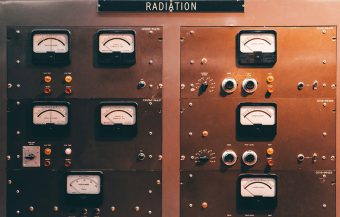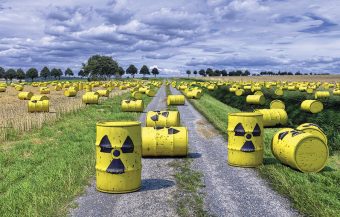Since it was first mentioned, the potential development of a nuclear energy program in Serbia has sparked significant interest. A topic absent from public discourse for decades, it has now garnered widespread attention across society, from scientists, economists, and journalists to the general public. Amendments to the Energy Act, which would include lifting the current moratorium prohibiting the construction of nuclear facilities, would form the foundation for further decisions.
Since expertise should guide such a topic of national importance, we sought detailed insights from Slavko Dimović, PhD, Director of the Vinča Institute of Nuclear Sciences, the largest multidisciplinary institute in the Balkans. While we have only scratched the surface, we aimed to explore an optimal solution for Serbia and how to build a specialized workforce, particularly nuclear engineers.
Nuclear Energy for Base Consumption

Choosing nuclear energy raises a broad spectrum of critical questions and provides much-needed answers. On the one hand, nuclear power is a solution for achieving climate goals and moving away from fossil fuels, offering the most significant reduction in CO2 emissions compared to other energy sources. Beyond ecological benefits and accelerated progress through the green transition, nuclear energy establishes a cornerstone for a country’s energy security, enabling stable energy supplies independent of volatile prices, weather conditions, and political uncertainties.
As Dimović, PhD explains, achieving the set climate goals requires abandoning fossil fuels by 2050, while consumer societies are demanding ever more electricity. Serbia finds itself in a unique labyrinth: these goals exert pressure on its economy, which risks losing competitiveness if it does not keep pace. Simultaneously, the chances of Serbia abandoning coal while maintaining energy security are slim. Serbia’s situation with fossil fuels is precarious because its domestic resource—lignite—has low energy value and thermal power, even compared to other types of coal. The country’s reserves are both insufficient in quantity and poor in quality, while coal imports are neither a sustainable nor long-term solution. Nuclear energy naturally emerges as a solution for self-sufficiency and a greener economy when considering penalties and pressures awaiting the domestic economy.
However, nuclear projects often face criticism for their tendency to exceed deadlines far more than other infrastructure projects. In addition to delays, nuclear power plant construction frequently suffers from budget overruns, sometimes doubling initial cost estimates. For example, one of the largest reactors in Finland, with a capacity of 1.6 GW, took 16 years to build. Despite these challenges, the numerous advantages of nuclear energy should not be overlooked.
Lessons from Chernobyl and Regulatory Frameworks
After the 1986 Chernobyl disaster, many countries worldwide tightened regulations and controls on radioactivity levels. At that time, Yugoslavia adopted stringent laws, setting limits four times stricter than those in the United States. Although the former state boasted exceptional experts, the inherited moratorium halted all scientific and technological progress in this field.
IN FOCUS:
- Responsibility for Sustainability: Business Practices as an Opportunity for Change
- Challenges in Implementing ESG Principles
- Where Is The Global Climate Fight Leading Us?
Serbia’s Energy Strategy
The draft strategy for energy development in Serbia, discussed publicly earlier this year, outlines reforms in the energy sector. These include gradually introducing fees for greenhouse gas emissions and ambitious targets for renewable energy sources (RES). By 2040, Serbia aims for wind and solar capacities to exceed 10 GW, with renewable sources comprising around 70 percent of the energy mix. The development of nuclear energy is being considered, though no specific targets have been set. Dimović, PhD suggests a more realistic figure of 30 percent renewable energy in Serbia’s mix—this is not due to a lack of expertise but because of climatic and meteorological constraints. While alternative and nuclear energy technologies are not directly comparable, they should work symbiotically as they serve different purposes. Alternative sources depend on their performance characteristics, while nuclear energy can serve as a stable and consistent base. Serbia’s reliance on coal remains a central issue; coal dominates electricity production, and entirely abandoning it seems impossible without a crucial energy solution. Still, when asked whether coal should be phased out, Dimović’s answer is an unequivocal ‘yes’.
Addressing Serbia’s Energy Deficit

When considering energy solutions, one must account for Serbia’s electricity deficit, estimated at 1.2 to 1.5 GW, according to Dimović. He recommends adopting regional practices, comparing Serbia with neighboring countries rather than larger players like France or Russia. Most of Serbia’s neighbors operate second-generation Russian reactors with a capacity of around 1 GW. While Chernobyl’s reactor was also second-generation, it used a graphite moderator, unlike improved models in the region. Serbia, however, could turn to third-generation reactors, with fourth-generation thorium reactors currently under development globally.
Dimović, PhD suggests that Serbia’s plan should involve constructing one or two conventional reactors with a capacity of 1.2 GW each. Another potential option is small modular reactors (SMRs), roughly the size of three or four stacked refrigerators, with capacities of up to 300 MW. These could be installed at decommissioned thermal power plants. However, he considers the first option more suitable for Serbia.
How to Educate Domestic Experts in Nuclear Engineering?
The shortage of skilled professionals is not limited to the nuclear industry; it is also evident in other sectors, including trades and driving professions. However, Slavko Dimović, PhD offers a potential solution to this issue:
“The planning process for a nuclear power plant takes three to five years. Once the state decides to secure funding and proceed with the reactor’s construction, experts come from the country that provided the technology. In this scenario, foreign professionals manage the installation and technical oversight of the nuclear power plant, while local personnel are trained and involved in the process. Such technologies should remain under state ownership, at least in our region, although there is the example of Slovakia, where a nuclear reactor is privately owned,” he explains.
A nuclear power plant employs fewer people than coal-fired power plants, primarily due to widespread automation and the highly educated workforce required, even during uranium mining. Only about 5 percent of the workforce are nuclear engineers, with the rest comprising mechanical, civil, and chemical engineers, among other specialists.
“To achieve the level of expertise we had decades ago when we had reliable technical personnel, quality schools, and serious engineers; we must commit to this path. Either we will rebuild our technical expertise, where we previously excelled, or shift towards tertiary services and become a tourism-oriented country, which requires a completely different type of workforce,” Dimović explains further.
Prepared by Milica Vučković
The story was published in the Energy portal Magazine RESPONSIBLE BUSINESS

